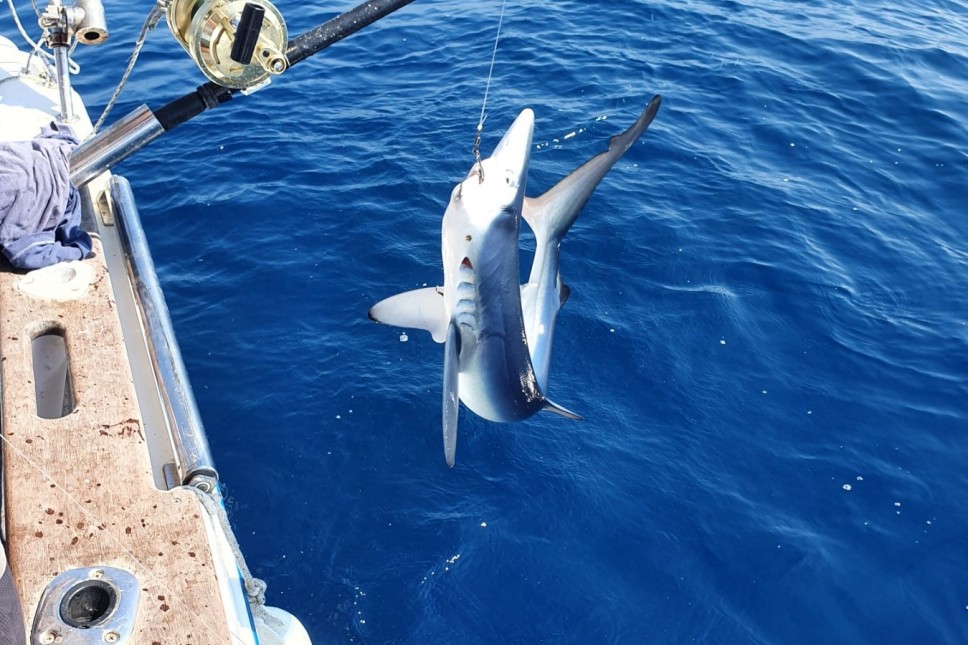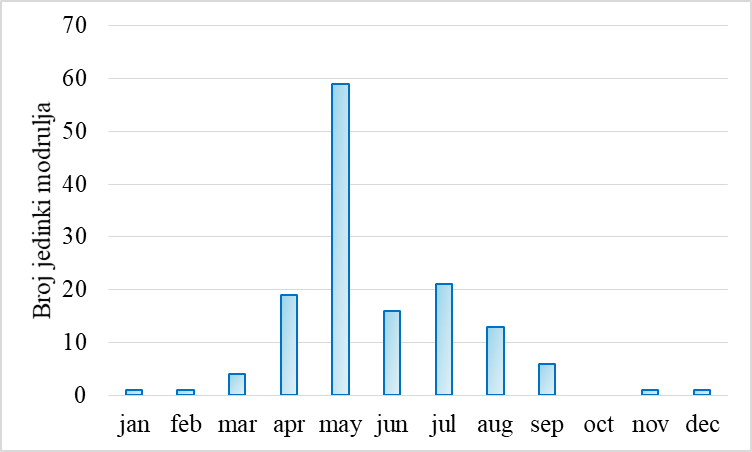The presence of blue sharks in our waters is most common during spring

Catches and sightings of blue sharks from previous years show us that they are most commonly encountered in our waters during spring. Although as the most prevalent pelagic shark in the Adriatic, it is seen throughout the year, nearly half of the individuals are recorded only in May.

The reason for this is likely the reproductive activities of blue shark individuals, during which mating and giving birth occur at this time of year. A female blue shark carries young for 9-12 months, and they are born at a length of 35-50 cm. Newly born individuals are recorded almost every spring and summer along the Montenegrin coast. The blue shark is a common and permanent resident of the Adriatic, as well as most of the worlds seas. However, despite being the most common pelagic shark in the world, its attacks on humans are extremely rare, as you can see for yourself at: https://www.floridamuseum.ufl.edu/shark-attacks/maps/world-interactive/ [link to shark attack filter].
By collecting simple data such as the period of catches, number, and size of individuals, valuable information can be obtained, both for the conservation of a certain species and for fisheries. The catches of most sharks and rays are not significant from an economic perspective but often have unintended effects. Thus, in longline fishing, blue sharks and pelagic rays cause damage to the fisherman by damaging fishing gear and destroying baits intended for targeted tunas and swordfish.
Since they have almost no economic value, but on the contrary, we strive to reduce their unwanted catch as much as possible. Thus, by determining when and/or where the blue shark is abundant, we can provide information for changing fishing areas or temporarily switching to a different type of fishing, thereby reducing unwanted damage to longlines and the number of caught blue sharks.
The blue shark, like many other sharks, is classified as endangered, and releasing them back to the sea is a service. Currently, it is not listed among the species prohibited for fishing, while the shark and ray species for which it is prescribed are listed in the Regulation on closed seasons for fish and other marine organisms from 2015. Incidental catches of protected species should be recorded in the catch log, and if the individual is alive, it must be returned to the sea.
Why do we need a photo of a shark/ray? Because species that are very similar in appearance are included in these inhabitants of the Adriatic. In some cases, accurate species identification can be difficult even with a photograph. Therefore, #sendusashark
You can see what a small blue shark looks like and how to handle it when caught at: [link to Facebook reel].
If you catch/see a blue shark or any other shark or ray, you can send us a photo via the Institutes Facebook page or post it to our Facebook group dedicated to this group of fish: [link to Facebook group].
Thank you for the photo @Beli Alivodic.

